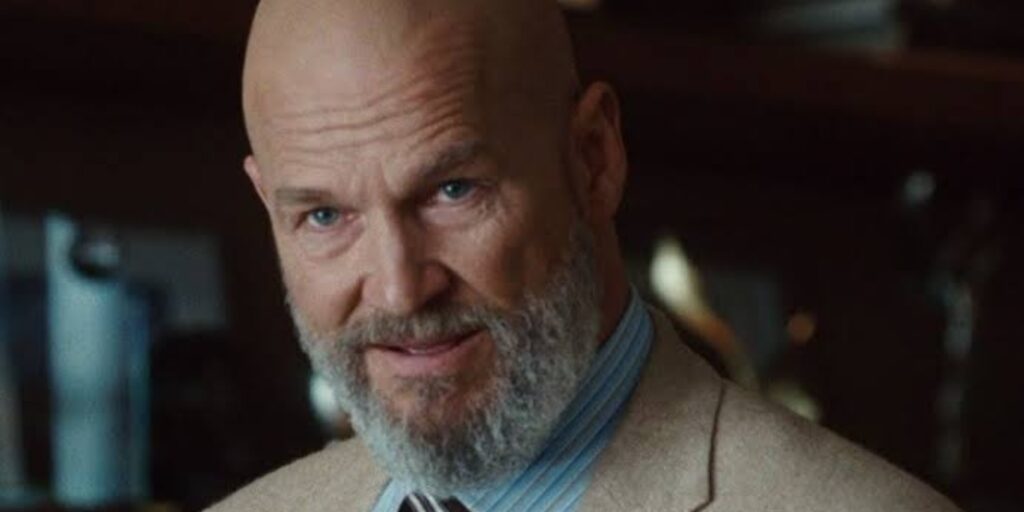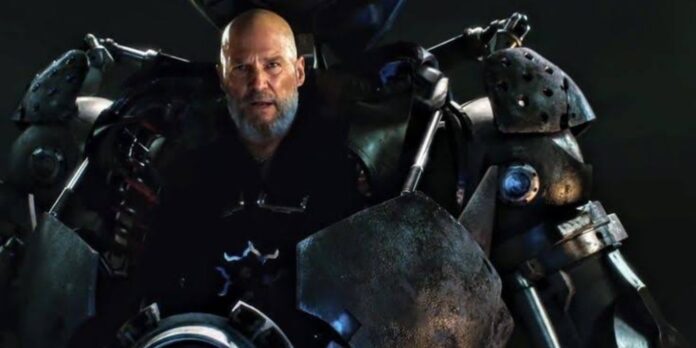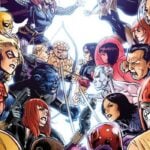It’s been almost two decades since Iron Man kickstarted the Marvel Cinematic Universe and introduced audiences to its very first antagonist Obadiah Stane. Portrayed by Jeff Bridges, Stane was Tony Stark’s mentor-turned-riva. His descent into full-blown villainy culminated in the creation of a crude but powerful armored suit, rivaling Tony’s own design.
Fans of the comics instantly recognized the setup as Marvel’s classic villain Iron Monger. However, the film never actually called him that. Fast forward to 2025. Marvel’s Disney+ series ‘Ironheart’ has not only given Riri Williams the stage to shine but also named Obadiah Stane as Iron Monger.
‘Ironheart’ Provides A Full-Circle Moment For Marvel’s Original Supervillain

In ‘Ironheart’ episode 3, a character named Joe McGillicuddy is revealed to be Ezekiel “Zeke” Stane, Obadiah’s son. This twist not only deepens the Iron Man legacy but also delivers a long-overdue namedrop, cementing Obadiah’s comic book moniker into MCU canon. It’s a subtle but loaded moment. During a conversation with Riri, Zeke draws a contrast between her inspirational stepfather and his own upbringing.
Related: Marvel Confirms Silver Surfer As Earth’s Most Powerful Alien With Skaar Following Close Behind
“You had a good role model. I had an Iron Monger,” he stated. And just like that, 17 years of unspoken lore finally snaps into place. Marvel doesn’t just acknowledge the name, it reclaims it. Iron Man was a relatively grounded superhero movie by modern standards, and at the time, Marvel Studios was still finding its footing.
They leaned away from flashy comic names in favor of realism. “Iron Monger” felt a little too cartoonish for a 2008 film aiming to reinvent the superhero genre with grit and gravitas. However, now, in a post-Endgame world where multiverses and cosmic threats are the norm, Marvel is finally comfortable embracing its comic book roots without hesitation. And it feels right.
Why The Name “Iron Monger” Matters

Some might argue that naming a villain after his armor doesn’t matter in the grand scheme of things. However, to fans of the comics and long-time MCU watchers, this is the payoff. The term “Iron Monger” was always embedded subtly into the MCU’s foundation. In Iron Man, there’s that memorable moment when Obadiah argues against Tony’s decision to shut down the weapons division of Stark Industries.
In case you missed it: Marvel Revives Battleworld In Bold New Series Teasing Future Secret Wars
He says: “That’s what we do. We’re iron mongers. We make weapons.” However, for nearly two decades, that hint remained just that. In the comics, Obadiah Stane’s transformation into Iron Monger wasn’t just about power, it was about obsession, control, and an ideological opposition to Tony Stark’s idealism. That theme carried into the MCU, but without ever naming it.
So, Zeke’s comment in Ironheart isn’t just a name-drop, it’s a confirmation. It’s a son unpacking the trauma of a father who was more tyrant than a mentor, more destroyer than an innovator. He wasn’t a builder like Tony Stark or a guide like Riri’s stepdad. He was a warmonger encased in steel as an Iron Monger.
Iron Man was as much about relationships as it was about armor. And Obadiah Stane’s betrayal cut deep because it felt human. Giving his villainy a name now puts a label on the monster he became. Moreover, the early MCU took baby steps, often stripping down characters to make them palatable to mainstream audiences. Code names like Iron Monger, Whiplash, or even Scarlet Witch weren’t used right away, if at all. However, today, Marvel no longer has to hide.





